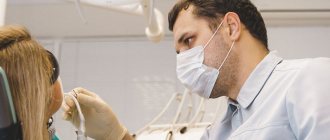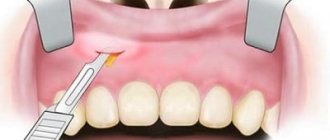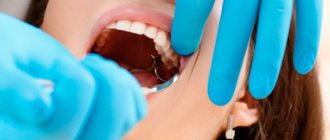After your tooth was removed, the doctor gave you clear instructions and recommendations on what to do and what not to do. But you came home and in the confusion forgot what the doctor said?
We will try to help you and answer the most common questions that a patient has after tooth extraction.
- How quickly does a wound heal after tooth extraction?
- What complications can occur after tooth extraction?
- How long should you keep the tampon in after tooth extraction?
- How to rinse your mouth after tooth extraction?
- What recommendations should be followed after tooth extraction?
- In what case should you urgently consult a doctor after tooth extraction?
What recommendations should be followed after tooth extraction?
- Do not eat food for two hours after surgery.
- Do not spit out blood clots during the day, as their absence can lead to exposure of the wound, which will negatively affect the healing process. Experts recommend swallowing saliva, even if it contains a small percentage of blood.
- To make the swelling go away faster, the patient can apply cold compresses to the site of the extracted tooth, but with caution so as not to get frostbite. The use of any warming compresses and scarves is prohibited!
- Refuse hot food and give preference to warm food, including drinks. You should also avoid spicy, sour and fatty foods for 1 week.
- Under no circumstances should you chew food at the site of the extracted tooth .
- Avoid drinking alcohol and smoking for the first two days.
- Do not apply medications to the wound or rinse the mouth with tinctures containing alcohol.
- Avoid any physical activity for two weeks.
- Do not touch the hole with your hands or foreign objects!
- Do not visit saunas and steam baths for a week.
Installation
The principle of using turunda is simple, you need to twist the material into a rope, then close the hole, reaching to the bottom. Cavities should not be left, and the doctor should not apply too much pressure, further injuring the tissue. If empty cavities remain after the procedure, there is a high risk of bacterial growth and inflammation.
Installation Features:
- inspection of the cavity after the intervention, the fragments must be completely removed, as they can cause inflammation and the appearance of pus;
- the turunda is tightly inserted into the hole, filling the cavity;
- The turunda is bitten to eliminate the remaining free voids.
The turunda remains in the hole for the entire time recommended by the doctor; you cannot remove the gauze yourself earlier. In case of inflammatory processes, the tampon is impregnated with medications. It is placed in the hole for one to two weeks, during which it cannot be removed. During normal removal, the gauze swab remains in the hole for no more than twenty to thirty minutes.
Attention: Turunda cannot be kept in the hole for a very long time, as it will become a source of proliferation of pathogenic bacteria. Also, a tampon left for a long time prevents the formation of clots at the operation site.
After removing the gauze, you need to make sure that bleeding does not start. This situation often occurs if the patient is taking any blood-thinning medications.
There are no special contraindications to the use of turunda, however, the patient should not have allergic reactions to the iodoform used for impregnation and other materials used for treatment. The doctor must conduct a preliminary test. If there are no rashes or itching, turunda can be used to stop bleeding and protect the wound. If allergic reactions occur, other methods are used, for example, sterile bandages.
Pushing the tooth into the perimaxillary soft tissues
Pushing a tooth into the perimaxillary soft tissue occurs when removing roots or impacted teeth using an elevator. Most often when removing third molars in case of resorption of the alveoli from the vestibular side. A dislocated tooth or part of it is displaced under the mucous membrane. Diagnostics An empty socket and the disappearance of part of the tooth are grounds to assume the possibility of pushing it into the perimaxillary soft tissue. To prevent “forgetting” part of a tooth, you should not throw away the extracted tooth, but carefully examine it and make sure that you have completely removed it. If the tooth was intentionally fragmented, you need to assemble the entire “puzzle”. If part of the tooth is still missing, you need to palpate the soft tissue in the area of removal. If a compaction is clearly palpated through the mucosa, it is necessary to dissect the mucous membrane above it, stratify the tissue and expose the surface of the fragment. Then it is removed using a curettage spoon or tweezers. If the “disappeared” tooth fragment is not determined by palpation, it is necessary to conduct an X-ray examination - take extraoral radiographs of the expected localization zone of the tooth fragment in two mutually perpendicular planes - frontal and sagittal. If it is impossible to continue the operation on an outpatient basis, the patient should be sent to a hospital.
X-ray of the cervical spine. The wisdom tooth to be removed is pushed into the soft tissues of the upper neck: a) side view; b) front view.
One of the roots of the extracted tooth is pushed under the mucous membrane of the alveolar process from the buccal side.
Content:
- What to do before deleting the eight
- What happens in the oral cavity during the extraction of the eighth tooth?
- What to do after wisdom tooth removal 3.1. The first day after removal 3.2. Second day after pulling out figure eight 3.3. Third and fourth days after wisdom tooth removal 3.4. A week after wisdom tooth removal 3.5. A month later
After a wisdom tooth is removed, the socket often becomes infected. Because of this, severe swelling forms and the tissues become inflamed. To exclude the development of negative complications, you need to properly prepare for surgery and follow all medical recommendations after it.
Genoss bone replacement materials
Genoss are bone substitutes of the highest quality, which have been successfully used in dentistry for a very long time.
When are Genoss osteoplastic materials used?
Genoss have proven themselves to be excellent in filling sockets at the site of an extracted tooth, dental implantation, bone ridge plastic surgery, filling cystic hilar cavities, in the case of post-osteotomy techniques, in restoring periodontal tissues, and filling cavities during sinus lifting.
Benefits of Genoss
- One hundred percent biocompatibility with tissues of the human body.
- High resorbability.
- Rapid tissue healing.
- Improvement of hemostasis.
- Easy to use.
Types of dressing material in dentistry
The following are widely used in dentistry:
- Absorbent cotton wool is used in therapeutic dentistry to dry the patient’s oral cavity during treatment. Cotton rolls are formed by twisting the material onto the handle of any dental instrument.
- White gauze is used to make napkins, balls, and strips for tamponade. The main condition is that the edges of the gauze are folded into the middle - this prevents fibers from getting into the wound. Used as a drying material for wounds.
The dressing material must be sterilized before use.
Tips for caring for a healing socket
The success of wound healing depends on two people: the doctor and the patient. If the doctor has already done everything in his power, it is up to the patient. The latter needs to be taken into account and carefully follow the recommendations and prescriptions. These may include the following:
- Leave in place and do not remove the embedded turunda (bandage). It protects against infection and promotes healing, and is often covered with medication. Usually the turunda is removed after 30 minutes, but in some cases (with complex wisdom tooth removal) it will have to be kept for 5-15 days.
- Follow a rinsing schedule. A specialist can prohibit them or recommend them. This point is very important. The best option is to take the medicinal solution into your mouth and simply tilt your head towards the healing hole.
After a tooth is removed, a blood clot should form in the wound. You shouldn’t disturb him for no reason, no matter how much you want to. It protects the wound from infections. Therefore, you do not need to rinse your mouth more often than the specialist advised, or do it too intensively. Water can wash out the clot, and then healing will be delayed.
If bleeding occurs, you can take clean gauze, roll it up in several layers, place it on the hole, bite and hold for up to 45 minutes. If bleeding continues for a long time, you will have to go to the doctor again.
After the anesthesia wears off, pain may occur. There is no point in enduring pain. It is worth using the painkiller recommended by the doctor. Also, do not ignore the recommendation to take medications. The experience of a specialist will tell you what a particular patient needs.
In a normal case, the hole heals and stops bothering you after about a week. If there are complications, the process takes longer and causes inconvenience. If the drug course is completed, no complications are observed and the hole has healed, you can simply stop thinking about it - it does not need attention. The only point that concerns the gums in general is that it is better to handle toothpicks more carefully and not to get into a recently healed area.
Tooth crown fracture
A tooth crown fracture is often a complication. It occurs due to the destruction of the crown by a pathological process or due to anatomical features. Increases the risk of traumatic removal of the root remaining in the hole. A fracture of the tooth crown can occur due to incorrectly selected instrumentation and violation of the extraction technique.
Prevention of tooth crown fracture
Prevention of tooth crown fractures lies in the correct tooth extraction technique and strict adherence to the principle of anatomical correspondence of the forceps to the tooth being removed. When fixing the forceps, you should not use excessive force, and tooth dislocation should be carried out with smooth back-and-forth movements with a gradual increase in the amplitude of tooth movement and the applied force. Before removing a tooth affected by caries, a fibrotomy should be performed along the entire perimeter of the root part of the tooth to the maximum possible depth in order to reduce the force required to dislocate the tooth.
Dressings used in dentistry
Gum dressings are composed of:
- soft - ointments, gels (actovegin, solcoseryl) - applied in a thin layer to the wound surface. This category includes bandages made of cotton wool, gauze, bandages;
- semi-solid - are made by applying a mixture of dentin paste and ointment to the prepared tissue surface. The bandage is applied to the wound and fixed by compressing the teeth. After 6 - 7 minutes it hardens and is securely attached to the desired area;
- solid - septopack (ready-made product) or independently prepared using dentol, repin. The components have a high degree of biological compatibility with the mucous membrane, their use significantly accelerates the wound healing process;
- collagen films - have anesthetic and antiseptic properties, promote rapid regeneration of soft tissues of the oral cavity;
- adhesive - are non-toxic compositions based on polyurethane. Once on the mucous membrane, the material polymerizes, creating a plastic, porous film.
How to understand that complications have arisen after suturing?
Alarming symptoms after removing the “eight” are as follows:
- heavy bleeding that lasts more than a day;
- severe pain, throbbing pain that prevents you from sleeping or leading a normal life;
- very large swelling;
- redness in the intervention area;
- blood in saliva in the first three days after the intervention;
- elevated body temperature.
In all these cases, you must consult your doctor. It is possible that stitches will have to be stitched again to avoid complications.
How long does it take for self-absorbable sutures to dissolve?
Typically, the suture material disintegrates after three weeks. The patient may notice how it has fallen out, or simply find that the wound remains clean, without threads. In more detail, catgut dissolves from ten to fourteen days, Vicryl - within thirty days, Dexon - a little longer.
It is impossible to name the exact period of resorption. Here everything depends not only on the characteristics of the material used, but also on the individual characteristics of the patient’s body. It also happens that the threads are still in place, but the doctor no longer sees the need for them. Then he removes them in the same way as non-absorbable ones.
Prevention
There are a number of actions that the patient must take immediately after this procedure and which will allow him to prevent possible complications.
- After the extraction, the patient needs to tightly compress the dentition. This is necessary in order to press firmly on the tampon placed in the wound.
- The medicine should not be removed by yourself.
- The hole should not be touched with your tongue or fingers. This is necessary so as not to accidentally damage the blood clot that has formed in the wound.
- If the patient experiences unbearable pain, it can be relieved with the help of analgesics that were recommended by a specialist. The dosage should also be prescribed by the doctor, since each patient reacts individually to the tooth extraction procedure.
- During the period until the wound is completely healed, the patient should stop smoking. This process greatly interferes with the normal healing of the hole.
- If the patient detects symptoms of complications, then, without delay, he should consult a dentist.
The patient needs to be aware of symptoms that may indicate the occurrence of suppuration or any other complications. Having noticed any of the signs, the patient should immediately contact a specialist for advice and subsequent treatment. We must not forget that only proper maintenance of oral hygiene and compliance with all the necessary rules will help the wound heal much faster.











